History of Pleasure Ridge Park, Kentucky
William Hurley • May 20, 2020
Pleasure Ridge Park in Kentucky is a suburb of Louisville in Jefferson County. It is now officially a neighborhood within the Louisville city limits. Our Pleasure Ridge park Dumpster rental services are the best around.
The history of this town goes back to the middle of the 19th century, when the land was taken over by settlers from Germany and France. The very first church in the area was St. Andrew’s Church, constructed in 1851. The church does not exist today, but a major road in the area still bears the name of the church.
The area that is nowadays referred to as the Louisville Railway saw a rail station constructed in 1874, along with a summer resort to accompany it. This hotel was built around a beautiful, shaded ridge called Muldraugh Hill. This area soon began to be referred to as Pleasure Ridge. In 1876, the official name of the town was chosen for the area when the first post office opened its doors.
What is now known as Pleasure Ridge Park was a popular destination for tourists right up till the beginning of the first World War.
By the time the 1950s rolled around, Pleasure Ridge Park was expanding quickly. Many newer subdivisions were constructed in the area, and people who were making their move to the region were big fans of the low prices of land. Not to mention the location being so close to Downtown Louisville, as well as Fort Knox.
In 1952, Pleasure Ridge Park High School was opened up, along with 28 other schools newly built in the Jefferson County area between the years of 1952 to 1966. In the first years of the school, students in the seventh through the ninth grades attended the high school. Grades were added each new school year, right up to 1962, which was the year the first class to graduate would make their exit from the school with diplomas in hand.
Fans of the history of alcohol will like to know that there was a historical distillery located in town. Before the days of the national Prohibition, there was a distillery located in the area known as the Pleasure Ridge Park Distillery. By the time Prohibition rolled around, the distillery was put out of business.
Today, the only thing left of this distillery is the street called Railroad Avenue. The trade magazine Mida’s Criteria also mentioned the distillery as being owned by The Combined Distillers of Kentucky, and said the Pleasure Ridge Park Distillery by name. A 1906 Jefferson County atlas also shows an outline of the distillery’s property.
In 1984, residents of Pleasure Ridge Park blocked an attempt by the city of Shively to annex the area.
Today, Pleasure Ridge Park is called home by a whopping 25,776 people, as reported in the census from 2000. The Pleasure Ridge Park High School has also seen huge successes, with over 100 honor roll students, 13 Governor’s Scholars, and two National Merit semifinalists graduating from the school. Pleasure Ridge Park is enjoying great successes, a massive victory for a small town with such a personal history. If you have a project in Pleasure Ridge Park give Best Deal Dumpsters a call today!
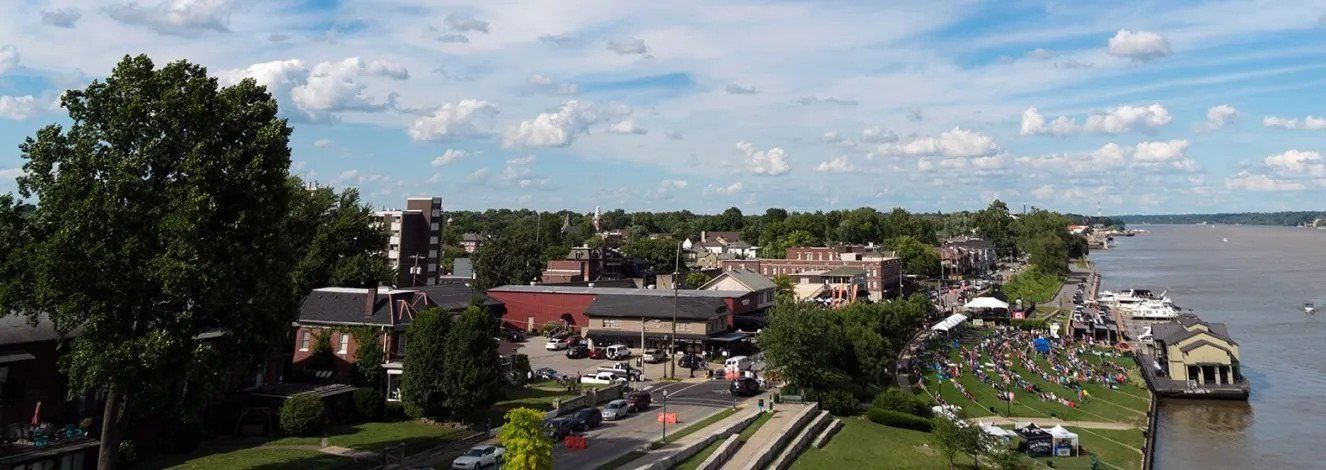
The town of Jeffersonville was named after Thomas Jefferson in 1801, which was the year he officially took office. One year later, in 1802, residents of the settlement used a pattern designed by Thomas Jefferson as an idea to form a city. This pattern was a grid design. On September 13, 1803, the first post office was established in Jeffersonville. Just five years later, in 1808, a considerable growth of settling in Indiana was spearheaded by the second-ever federal sale of land, when the federal office was set up in Jeffersonville. This growth of settling was then driven further by the ending of the War of 1812. Not long after the city was formed, Jeffersonville was established the county seat of Clark County. This happened in 1802, and officially meant that Jeffersonville replaced Springville. Jeffersonville had this position usurped by Charlestown in 1812, but it didn’t remain that way for long. The county seat was renamed to Jeffersonville in 1878, and it remains the county seat of Clark County to this day. During the Civil War, Jeffersonville was used as one of the main bases for the troops and supplies for the Union Army. The third largest hospital during the Civil War was also in the area, the Jefferson General Hospital, which was located in Port Fulton. During wartime, this hospital took care of some 16,120 patients in 5200 beds. Right down the hill from the hospital, a cemetery was built to honor the lives of fallen soldiers. The wooden markers on the graves had decayed by the 1920s, however, which caused the Jeffersonville city council to build a sports field over the cemetery without bothering to move the graves. Gambling and casinos helped the economy in Jeffersonville during the times of the Great Depression, and later on, the Great Flood of 1937. Because of the rise in gambling in the area, Jeffersonville was referred to as Little Las Vegas for a time. In the summer of 2012, Jeffersonville city officials revealed their plans to create a plaza costing $8 million, which would be called Big Four Station. This plaza opened up in 2014, and features a playground, fountain area, stage, and all sorts of recreational space. It has brought in thousands of visitors to the shopping district and spurred more development in the area, including adding a Marriott hotel by the park. Today, Jeffersonville is home to a whopping 44,953 people as of the 2010 census. Notable people that come from the area include Jimmy Wacker, a pitcher in the MLB, and Judy Lynn, a renowned country music singer. Best Deal Dumpsters is happy to deliver Jeffersonville, Indiana dumpster rentals!
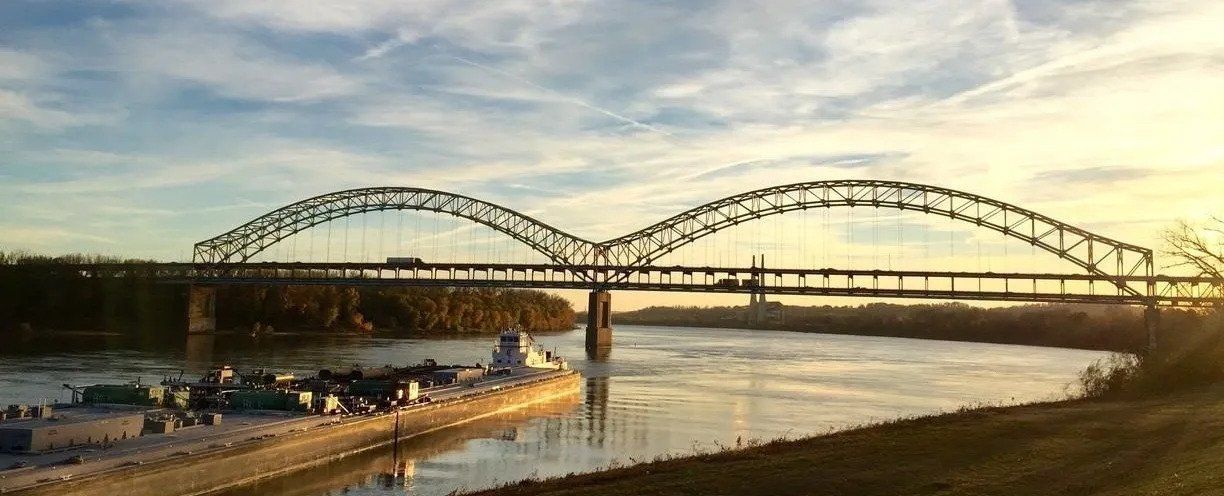
Located in Floyd County in the state of Indiana, the town of New Albany has plenty of things for history buffs to learn. Like many other areas in Indiana, the city of New Albany has roots that go back to the American Revolutionary War. We weren't around back then but Best Deal Dumpsters proudly deliver dumpster rentals New Albany, Indiana now! After George Rogers Clark captured the territory in 1779, he was awarded several vast tracts of land along southern Indiana, along with the majority of Floyd County. When the war was over, Mr. Clark sold some of the property he acquired too many of his fellow soldiers. The area now known as New Albany ended up belonging to Colonel John Paul. The settlement of New Albany was officially founded in July of 1813, when three brothers from New York arrived at the Falls of the Ohio and named the area after Albany, New York. These brothers were named Abner, Nathaniel, and Joel Scribner. The brothers bought the land from Colonel John Paul. In 1814, Joel Scribner and his wife Mary built their first house in New Albany, dubbed the “Scribner House.” This historical monument still stands today. In 1817, New Albany was officially incorporated as a town. New Albany officially became the government seat of the new Floyd County in 1819, which was only three years after Indiana was officially recognized as a state. In 1824, the first courthouse in the New Albany region was built. New Albany saw fast growth, quickly becoming the most significant city from 1816 until 1860, when Indianapolis stole that crown. New Albany was the wealthiest part of the state of Indiana, with many citizens being worth over $100,000. When the steamboat industry took over, New Albany was a big part of leading the charge. With plenty of lumber to get the job done, shipbuilders in the area churned out such boats as the famous Robert E. Lee, Eclipse, A.A. Shotwell, and the Eliza Battle. Along with shipbuilding, many other businesses were opening in the area, such as machine shops, cabinet and furniture makers, silversmith stores, factories, and a wide range of other merchants. The second-largest business to open up in the area was called the American Plate Glass Works. The New Albany High School opened its doors for the first time in 1853, and it was the very first high school in the state of Indiana. New Albany would also end up being the first in the state to make a consolidated school district just a few years down the road. The famous Town Clock Church, which is now a Second Baptist Church, was a stop on the infamous Underground Railroad. The first steeple on the church was taken out by a lightning strike in 1915, and wasn’t replaced until 2016, over 100 years later. Today, New Albany is called home by 36,372 people as of the census of 2010. Notable people from New Albany include pro wrestler Rob Conway, astronomer Edwin Hubble (famous for the Hubble Space Telescope), and Rondale Moore, a football player.
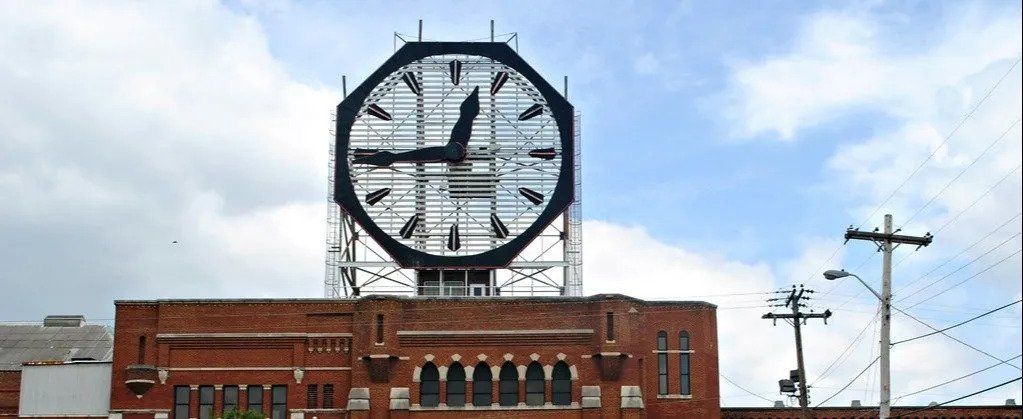
Many cities in Indiana have a colorful past and a story to tell, and Clarksville is definitely no exception to that rule. With a history dating back to the American Revolution, Clarksville is still growing and expanding today, offering plenty of opportunities for people and businesses to thrive. The history of Clarksville goes back to 1778, when George Rogers Clark established a post on an island at the Falls of the Ohio during the American Revolution. At this post, Clark trained a regiment of 175 men for defense of the area. After the war, George Rogers Clark was given approximately 150,000 acres as a thanks for his service in the war. Clark set aside 1000 acres of his tract for the development of a community. During this same time, a stockade was constructed, and settlement of the area was underway. The city was named Clarksville after George Rogers Clark, who founded the area. William Clark was the younger brother of George, and Stephen Ambrose, the historian renowned for his works. Fans of dueling flocked to Clarksville, because they wanted to get out of the state’s anti-dueling regulations. One of the most famous duels to unfold in Clarksville is 1809 duel that occurred between Henry Clay and Humphrey Marshall. Later on, there was an attempt to build another town within the boundaries of Clarksville. This town would have been called Ohio Falls City, but the Indiana Supreme Court shot down the plan, ruling that it would be illegal. Clarksville was initially managed by a Board of Trustees that had ten members. The trustees were allowed to elect new replacements for officials as needed, and these officials did not need to be residents of the town. This was met with controversy by Clarksville residents, and in 1889, the board was replaced by a smaller, three-member board. These three members were selected in three different ways. One board member would be chosen by the Floyd County Commissioners, while another would be selected by the Clark County Commissioners. The last board member would be elected directly by the residents of the town of Clarksville. Sometime between 1889 and 1937, this system was also shot down, and replaced by a five-member board, with all five members of the board elected by the citizens of Clarksville. Unfortunately, all of the records associated with these changes in governing were lost during the Great Flood of 1937. This flood demolished the town, submerging it in 12 feet of water. Clarksville was then rebuilt with a newer, modern plan. Since then, the city has seen a massive boom in business and population. As of the 2010 census, 21,724 people reside in Clarksville. Clarksville is notable for being home to the Colgate Clock, which is one of the most massive clocks in the world. Clarksville is also the residence of Frank Kimmel, a NASCAR driver who was born and raised in the area. Best Deal dumpsters proudly services the Clarksville, Indiana area, no dueling is needed.

Valley Station is a suburb of Louisville in Jefferson County, Kentucky. Now considered a neighborhood, the area is not without its own history, and has plenty of stories to tell for those interested in seeking out the history of the city. I'm Will Hurley owner of Best Deal Dumpsters and this will be my attempt to summarize it for you. Valley Station's history dates back to the middle of the nineteenth century, when a sizeable swamp was drained, and settlers began arriving shortly after that. The Salt River Turnpike ran through this area, and that turnpike is known these days as the Dixie Highway. In the 1950s and 1960s, a lot of suburban development began in the area, turning it into a large neighborhood similar to Pleasure Ridge Park, a nearby development. People interested in historical areas and monuments would love a few bits of Valley Station's storied past. Valley Station is home to a large, 300-acre farm called Riverside, The Farnsley Moremen Landing. With a museum and an auditorium, it's a place where anyone interested in the area can come and learn. Located on the Ohio River, the Farnsley Moremen House is an historic 1838 farmhouse built by Gabriel Farnsley. It is a two-story house in the Greek Revival style that is listed on the National Register of Historic Places. In 1849, Gabriel Farnsley passed away and left no will behind. There were several years of legal proceedings regarding the estate. The Moremen family legally assumed ownership of the home in 1862. After the transfer of ownership, the Moremen family expanded the size of the farm area, bringing it up to a whopping 1500 acres. This made it one of the largest farms in all of Jefferson County at the time. In the 1880s, the property was divided and split up amongst all of the heirs. It remained in the hands of descendants of the original Moremen family until it was sold to Jefferson County in 1989. Valley Station also offers another historical site that history buffs might be interested in. Levee Trail is one of the oldest sections of what is now called the Louisville Loop and offers flood protection spanning from Riverside Park to the Farnsley Moremen House. The Levee Trail also offers people hiking and biking opportunities, or just plenty of chances to see nature. The rest of this area offers historical value, as well. In the 1890s, the famed landscape architect Frederick Law Olmsted Sr. wanted to see many community parks connecting with all of the neighborhoods in the Louisville area. He created beautiful, nature lined parkways that connected everything via "ribbons of green." A good portion of this area is now part of what is known as the Louisville Loop. Valley Station, as a neighborhood and a suburb of Louisville, continues to see growth and expansion as the years go on. In the 2000 census, the population of Valley Station was 22,946. In 2003, Valley Station became a part of the Louisville Metro, officially making the area a neighborhood of Louisville. We feel like we have been helping by providing dumpster rentals in Valley Station since 2008!
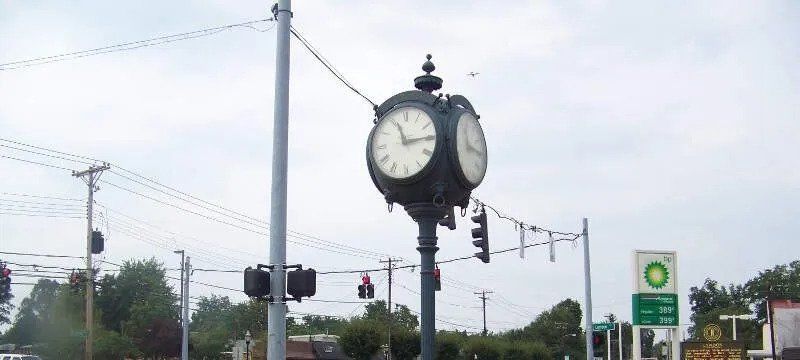
Lyndon Kentucky is a quickly growing community in Jefferson County, Kentucky. Even though the city was not officially incorporated until May of 1965, the town of Lyndon still has quite a bit of history behind it dating back to the late 1800s. Best deal dumpsters is proud to offer dumpster rentals in Lyndon. The area now known as Lyndon played host to the Oxmoor Farm, which was where Alexander Scott Bullitt called home. Alexander Scott Bullitt was one of the people behind the drafting of Kentucky’s first constitution. Sometime after the year 1865, the Louisville and Nashville Railroad (otherwise known as L&N) offered the local landowner Alvin Wood a connection to their network. Provided that Mr. Wood pay the initial costs of construction of the station, along with the donation of land. Alvin Wood did just that, and in 1871, the Lyndon train depot was officially in service. This was great news for people in the area, as the closest spot in the area for someone to catch a train before the development of the new train station was St. Matthews. In 1880, the first school in Lyndon opened up. It was called the Progress School and was made up of only one room. The Progress School taught all eight grades, and two of the teachers at the school were descendants of Johann Sebastian Bach. The last principal of the school was Mary Alice Bromley, and she was also the new principal when the Lyndon Consolidated School opened its doors in 1938. In 1896, the Kentucky Military Institute officially began calling the town of Lyndon home. The area of Lyndon also played host to the Central State Hospital. Lyndon only continued to grow after 1900 rolled around. The first fire department in the area, the Lyndon Volunteer Fire Department, opened up in 1950. The first fire truck in the area was kept in front of the Lyndon Key Market at day, and by the John McCarthy Garage at night. The founder of the city of Lyndon, Alvin Wood, was encouraged to start the town and the rail station because of the fact that the closest train station was in St. Matthews, another settlement in the Jefferson County area. Alvin Wood ended up naming his train depot Lyndon, apparently named after Lynn’s Station, which was a military fort built atop Beargrass Creek in the 18th century. When the city of Lyndon was officially incorporated in 1965, it was named after that original train station that Alvin Wood himself dubbed Lyndon. Today, Lyndon has only continued to show growth and expansion . The 2000 census reported 9,369 people living in the city, and only seven years later, that number was up to 11,002 people as reported by the 2017 census. Lyndon is still an independent city to this day, and has its own mayor and emergency services. It is also not counted among the population of Louisville, even though citizens of Lyndon can still vote for Louisville mayor and Metro Council members. Notable businesses this area is home to include Kroger stores, UPS Air, Westport Village Shopping Complex and of course Best Deal Dumpsters.

The Jefferson County region of Kentucky is steeped in rich local history. Many towns in the area share stories of the most exciting things that happened in their pasts, and the same is true for the city of Anchorage in Kentucky. Through all of the years, the town has managed to retain its suburban roots, helping achieve more growth for Louisville. The story of Anchorage began when a man named Isaac Hite purchased a land grant in 1773. His original grant now makes up the area known as E.P. Tom Sawyer State Park and the Central State Hospital. Early maps of the area refer to this plot of land as Hite’s Mill, while others referred to it as Hobbs Station. The city got its name from The Anchorage, which was the estate of an early resident of the area, riverboat captain James W. Goslee. The townspeople chose the name to honor him after his death when the city officially incorporated in 1878. According to local lore, there was an anchor fitted into the wheel of a locomotive prominently located in the middle of town that was supposedly taken off of Goslee’s ship, the Metamora, by Goslee himself. In 1849, the Louisville and Frankfort Railroad was built, and was later bought up by the Louisville and Nashville Railroad. Development of a new rail line in 1901 brought in the possibility of faster travel between Anchorage and Louisville, including several other smaller towns in the region. Temperatures in the city were usually cooler than in Louisville, and it became a popular destination for wealthy Louisville citizens to purchase summer homes and escape the significant city heat. One of these buyers was philanthropist Isaac Wolfe Bernheim, who commissioned the Frederick Law Olmsted firm to design a new plan for the town of Anchorage. This plan would bring in stone bridges and triangle intersections. The city of Anchorage is well known for being home to some of the wealthiest people in the area. Brand new, upscale homes can be found here, with many homes added after 1977. A good portion of the city is known as the Anchorage Historic District, which is listed on the National Register of Historic Places. The founder of Papa John’s Pizza, John Schnatter, is a resident of Anchorage. He owns around six percent of the land in Anchorage, including a good deal of the center of the city. Mr. Schnatter restored a rail station, three of the historic buildings in town, and also plans to build a bank, a restaurant, and a hiking trail. He says he intends to do all this to preserve the city’s character. Anchorage is home to 2,435 people as of the 2017 census, a slight increase from the 2,264 people reported in the census of 2000. Other notable citizens from Anchorage are Joan Osborne, a singer, Virginia Pearson, a silent film star, and David C. Novak, the CEO of Yum! Brands. Best Deal Dumpsters is proud to deliver our driveway safe dumpster rentals in Anchorage, Kentucky!
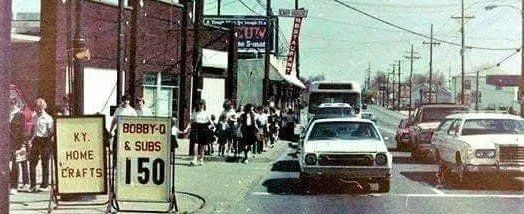
The town of Shively in Kentucky is, officially, a part of the city of Louisville. The city is steeped in history, however, with many stories to tell and a few historical areas that still exist today for anyone to visit, should they please. The story of Shively goes all the way back to 1778, after the settling of Louisville. Early landowners in the area were the Shively family, Christian William Shively, and Jacob Shively, along with Colonel William Pope and Major Abner Field. Christian Shively opened up a tavern and a mill on his 1000 acre property. This road was later incorporated as the L&N Turnpike, which connected Louisville to the river. Christian William Shively eventually ended up donating the land in 1816 in exchange for a place of worship. That church is now called Parkview Methodist. Not long too long before the beginning of the Civil War, the land now known as Shively was popular with German immigrants, who constructed the St. Helen’s Church around the year 1897. People called the community St. Helen’s in honor of the construction of the church for several years. When the postal office set up shop, however, they were not able to adopt the name due to another town in the same county having the same name. Near the end of Prohibition, several alcohol distilleries set up shop in the area. Louisville attempted to try and take over and tax these businesses during the time of the Great Depression, but the residents of the town incorporated separately and set up their own district instead. This happened in May of 1938, and the $20 million in revenue made sure the city was funded. This was all even though the city was becoming one of the quickest-growing towns in the state. All by the time the 1950s rolled around, when suburbanization was making its way to Louisville. An increase in taxes led to the closing of most of the distilleries in the area in the 1960's Shively’s population slowly dwindled in 1970 to around 19,233 people. In the 1980s, the city saw some controversy after the police chief at the time owned up to accepting bribes for allowing sex crimes in town. Today, Shively is still well renowned for its history with the liquor industry. Brown-Forman’s distillery is still in operation, and even producing the historic Early Times brand, which was first released in the 1860s. The Stitzel-Weller distillery, which was another famous distillery in the area, has since been changed to an attraction for tourism, where residents and visitors to Shively alike can come check it out. As of the 2010 census, 15,264 people call the Shively area home, which was a slight growth from the 2000 census, which reported 15,157 people living in the area. People interested in the city’s history with alcohol will be happy to know that the Heaven Hills Distillery currently calls Louisville home, which is right outside of Shively. Best Deal Dumpsters is located very close and offers dumpster rentals in Shively, give us a call today!



